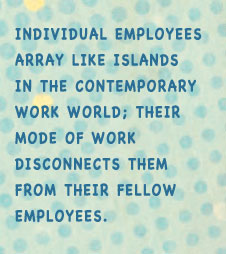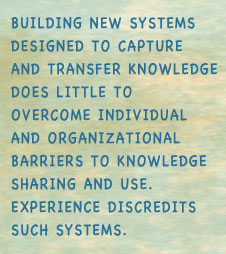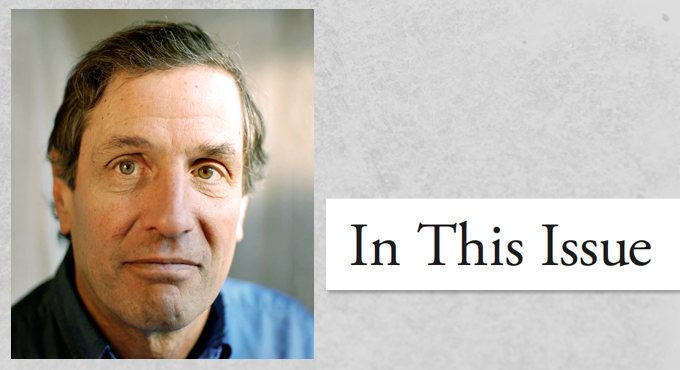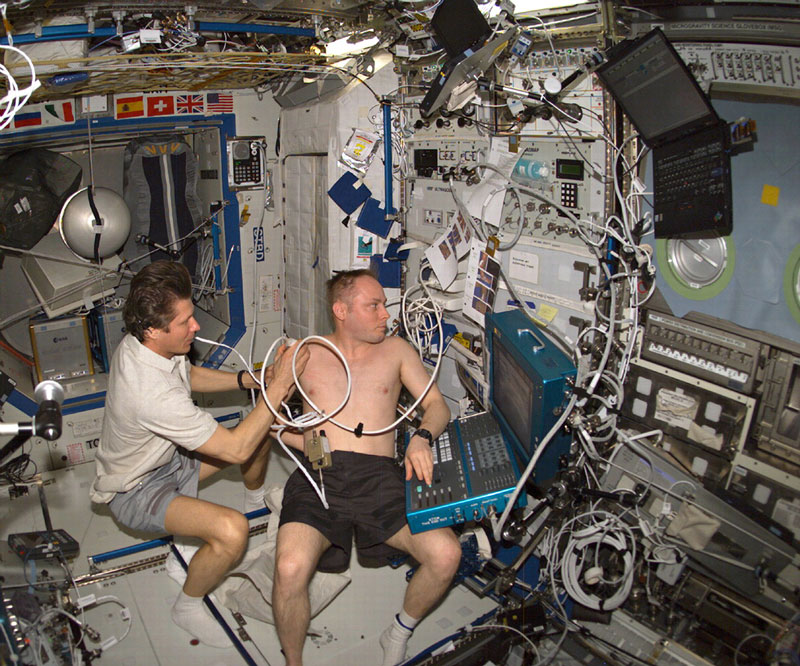By T.J. Elliott
To improve knowledge sharing, ETS has sponsored new-idea contests and forums—both virtual and face to face.

Organizations—and the people who make them run—expect and desire a return on the knowledge they possess. In economic terms, they wish to collect and maximize the “rents” possible from the application and combination of knowledge contained in patents, documents, and—most important of all—employees. Yet leaders of all types have reason to fear that such is not the case.
Capitalizing on organizational knowledge requires conveying it to people or groups who need it but don’t have it. Why is this so challenging for people and organizations? A gap exists between and among human beings across which important tacit knowledge often cannot pass. Imparting what is in your head successfully to another person requires effort. It does happen, but neither automatically nor naturally.
Individual employees array like islands in the contemporary work world; their mode of work disconnects them from their fellow employees. Either they sit at their laptops working on individual projects with a small number of peers, unaware of the existence of others who possess knowledge that would prove useful, or they attend countless meetings with too many people, where competition for scarce resources makes them resist connection with others. Whether unaware or resistant, they lose opportunities to view situations differently, choose solutions more cogently, and devise innovations plentifully.
Organizations often make the problem worse. They become labyrinths that foil earnest attempts to find or use knowledge. Their systems, policies, and cultures often combine to render it harder—if not impossible—to make something out of the knowledge contained within their boundaries. Wittingly or not, they create bottlenecks, cul-de-sacs, and other barriers.
 This insight is not original. The separation between the potential and actual value of collective knowledge was recognized before Peter Drucker even coined the term “knowledge worker” in 1959. But understanding this disjointed reality can cure the practitioner of arrogant plans and unrealistic aspirations while prodding productive experiments associated with individuals and organizations.
This insight is not original. The separation between the potential and actual value of collective knowledge was recognized before Peter Drucker even coined the term “knowledge worker” in 1959. But understanding this disjointed reality can cure the practitioner of arrogant plans and unrealistic aspirations while prodding productive experiments associated with individuals and organizations.
The issues with the “islands” include the following:
- The way we see ourselves—thinking we know more than we know and/or that we are always right.
- The way we see others—failing to listen to that which does not confirm existing beliefs.
- The way we make sense of what we see—a mix of biases, heuristics, and filters.
For eight years, participants in leadership development groups at Educational Testing Service (ETS) have been asked to solve “wicked problems.” Invariably, the early sessions are replete with statements rather than questions: faced with the challenge of cutting overhead, they talk about turning off the lights; challenged to develop a new product, they present pet ideas. Only when they are directed to reflect and are shown the patterns of their early communication—all advocacy, no inquiry—do they ask questions of each other and question their own assumptions. What keeps us as islands at times is the recognition that allowing other knowledge into our space could work against our interests in multiple ways. In some instances, the effect is only irritation at having to change our views; in other cases, the consequence would be a loss of authority or rewards.
And organizations? Their very structure forms the first set of barriers. The organizational chart of the founders may erect “walls” among various personnel and functions rather than create conduits for communication. Successive designs repeat this error. Matrix-, line-, market-, or geographic-themed structures create different versions of the problem, moving the walls but not tearing them down. Formalization of accountability can stifle ideas and isolate information as individuals are excluded from meetings or e-mail distribution lists, and differences of opinion are quietly discouraged. Systems grow so cumbersome that even when we see what needs to be fixed their structure disallows it because of the time or money involved.
Consider this example of organization as labyrinth: A customer service representative notices that the way in which a form is configured for registrations causes multiple errors by customers, which require human resolution. To solve the problem, a request for removal of one word in one field is made. The organization’s systems are such, however, that the initial estimate of the cost to fix the software would be a prohibitive $2 million. The IT folks acknowledge also that they are concerned they would “break something” in the application if they made the change. They lacked the tools to “see” all the places in the application that would be affected by the name change for the field. Such a remedy requires dedicated testers and no budget existed for that resource. Important knowledge existed but the reality of the organization’s systems prevented it from being applied profitably.

The intent here is not to vilify corporate structures or individual knowledge workers. The challenge is to focus less on regretting the labyrinth’s frustrations or the individual’s insularity and more on navigating to get what is needed to produce what is desired. Organizations may appoint centurions who keep knowledge away from leadership, breed groupthink, and focus on politics so much that knowledge is subverted, but it is impossible to accomplish complex work without the coordinating structures they provide. Similarly, individuals may dissemble, distort, defer, and dismiss the knowledge of others, but we should concentrate on those instances when collaboration and creation transpire.
Here are two approaches that have shown promise at ETS.
Blogs, Contests, and Weak Ties
One of the realities of employees being spread like islands within an organization is that their connections are usually weak with all but their specific group. But so-called weak (rather than non-existent) connections are a good source of new ideas. Sociologist Ron Burt makes the case succinctly: “The weak-tie argument is elegantly simple people live in a cluster of others with whom they have strong relations. Information circulates at a high velocity within these clusters. Each person tends to know what the others know. The spread of information on new ideas and opportunities, therefore, must come through the weak ties that connect people in separate clusters.” Having an area where employees can exercise these weak ties to encounter new expertise or ideas holds promise, but hosting a blog, wiki, or other social-media space without a specific purpose and facilitation will fail. Running contests in order to elicit knowledge that is held throughout the organization can motivate the sharing.
 ETS ran “Margin for Mission,” inviting staff to submit ideas for generating revenue or saving money. Each participant received a certificate for a free cup of coffee or tea, with larger prizes awarded at the end of each month for the best idea. The message was that as a not-for-profit we must increase our revenue and control our expenses to be able to fulfill our mission. The contest ran for ten weeks and had submissions from almost one quarter of ETSers that were read in turn by an equal number of “lurkers.” The prizes were modest—a $250 gift certificate to Amazon—but the rewards were significant: employees were introduced to other individuals and their ideas.
ETS ran “Margin for Mission,” inviting staff to submit ideas for generating revenue or saving money. Each participant received a certificate for a free cup of coffee or tea, with larger prizes awarded at the end of each month for the best idea. The message was that as a not-for-profit we must increase our revenue and control our expenses to be able to fulfill our mission. The contest ran for ten weeks and had submissions from almost one quarter of ETSers that were read in turn by an equal number of “lurkers.” The prizes were modest—a $250 gift certificate to Amazon—but the rewards were significant: employees were introduced to other individuals and their ideas.
Connect and Then Connect Some More
We established our “Knowledge Workings” blog to create different combinations of people by arranging forums where they are more likely to meet and converse with coworkers outside their disciplines. We started virtually and then built upon those connections for face-to-face events. For example, there were 1,259 online entries in 2009; fewer than 400 netted a reply. So we threw the “Blog Oscars” and had those who contributed the most stroll down a red carpet while all “lurkers” could watch and enjoy refreshments, bringing together colleagues who rarely interact. Such combinations help all to understand the tectonics of knowledge in the organization better. Then it becomes possible to create an “earthquake” by forming cross-divisional, cross-functional teams that have dual goals of solving wicked problems and learning about how they defeated the drooping entropy of human communication to do so. Invariably—when adeptly facilitated—they learn a great deal from each other.
In developing such connections, try to get the leaders out of the way. Bob Sutton has noted how some leaders brilliantly dilute their influence but stir their people by taking a backseat in some discussions. A senior leader in our San Antonio headquarters has held mixed lunches with every one of the four hundred people there. He speaks sparsely and almost always to prompt others to take the lead in discussing what they know that they think others should know.
Avoid the Folly of “Build It and They Will Come”
Building new systems designed to capture and transfer knowledge does little to overcome individual and organizational barriers to knowledge sharing and use. Experience discredits such systems. At ETS we now require leadership to build bridges among existing systems. Can the Quality Management System talk to the SharePoint platform and vice versa? Is there a map of all governance groups so that they know where they might find additional information? Do new hires receive an orientation that offers the obvious but often overlooked opportunity to meet other people? Are there interview series at which those with important information from the front lines of your business are questioned carefully and inventively in front of an audience of coworkers who don’t know them? We undertook experiments based on each of the above questions to expose knowledge to a greater audience that either could not find it or didn’t even know to look.
If the connecting happens and the weak ties deliver, then more people will know not only what others do, but also new things as knowledge combines, generates, and recreates. In such a circumstance, the islands are bridged and the labyrinth comes with a GPS.
About the Author
 |
As ETS’s vice president of Strategic Workforce Solutions and its chief learning officer, T.J. Elliott has overall responsibility for functions that include recruitment, benefit provision and compensation through knowledge, process and project management, performance improvement, and learning and development. |









